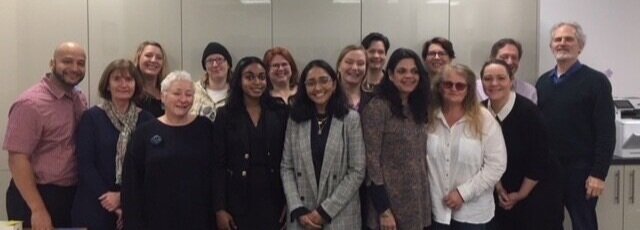CURRENT WORK
1. International Parent Advocacy Network (IPAN) developed
David has been working with Andy Bilson in the U.K. and a group of parents and allies to create the International Parent Advocacy Network (IPAN) to support and expand parent advocacy throughout the world, by building a parent-led movement to transform child welfare.
IPAN works to increase the influence and power of parents in child welfare decision making as an essential way to improve the well-being of children and parents so that children can remain safely with their families.
IPAN created the Toolkit for Transformation, on-line training materials to launch and strengthen parent advocacy programs. The Toolkit is available free here.
2. Parent Advocacy efforts spread world wide
PARENT ADVOCACY: The movement to enable parents with child welfare experience to have a significant influence in child welfare at the case, program, and policy levels was launched by Tobis in New York City in the 1990s. The parent advocacy movement in child welfare has spread to other high income countries in which parents, grandparents and their allies are organizing to transform child welfare systems.
3. Foster care reform in New York City
As director of the Child Welfare Fund in NYC, David used its resources over 18 years to increase the influence and power of parents in NYC’s child welfare system. This work helped found the Parent Advocacy movement.
This work led to a decrease in the number of children in foster care from almost 50,000 in 1992 to fewer than 8,000 today.
Other major changes in New York City include establishing excellent interdisciplinary legal representation for parents; significantly reducing the length of time children remain in foster care; providing more services to support struggling families; and a meaningful role for parents in child welfare decision making.
EARLIER WORK
4. A new child welfare system for Lithuania
Working for the World Bank in the early 1990s, David developed and implemented a plan for a new child welfare system in Lithuania. The goal was to keep children safely with their families and out of large, harmful residential institutions.
The success of that work led the World Bank to ask him to prepare a monograph. This report became the basis for the World Bank’s strategy for deinstitutionalization and community-based social services in the region.
With the support of UNICEF, David led a similar assessment and reform in Romania, contributing to a significant decrease in the number of children in residential institutions there.
5. Improving lives in Latin America
David has worked in different capacities to improve the conditions in Latin America. He was the first American Field Service Exchange Student in Paysandú, Uruguay (‘61) and then was a Fulbright Scholar to Guatemala where he studied the US’ role in under developing Guatemala (‘66–’67).
David then worked at the North American Congress on Latin America (NACLA) which published the book he wrote and co-edited with Susanne Jonas, Guatemala: And so victory is born even in the bitterest hour.
More recently David was a consultant to the Ministry of Economic Development of Tabasco, Mexico. He lead a team that designed and implemented the first government-administered foster care program in that country.
6. Activism against the War in Vietnam
No act is too small. Looking back, David is proud to know his work in the anti-war movement played a small part in ending the war.
In addition to helping set up the Draft Action Group to counsel young men about the war, he also organized demonstrations and spoke at rallies and universities. He refused to serve in the military, handing in his draft card to Reverend William Sloan Coffin in 1967. The United States government filed a law suit against him and other students who refused to serve in the war — the students won.
While in graduate school, he helped produce a publication entitled Go to School, Learn to Rule, which exposed the connections between Yale University and the war effort.
In 1968, David was part of the first student delegation to visit North Vietnam, just weeks after the United States stopped bombing North Vietnam. The U.S. government tried to take away his government fellowship after this trip, but he, again, was victorious.
7. Civil Rights in Mississippi
David worked in the civil rights movement in Clay County, Mississippi in 1965. He first went to Mississippi leading a group of students from Williams College and the Windsor Mountain School to rebuild a burned church that had been used for civil rights meetings. He later returned to Mississippi as a civil rights organizer, working with the Council of Federated Organizations teaching in a Freedom School and registering people to vote.




